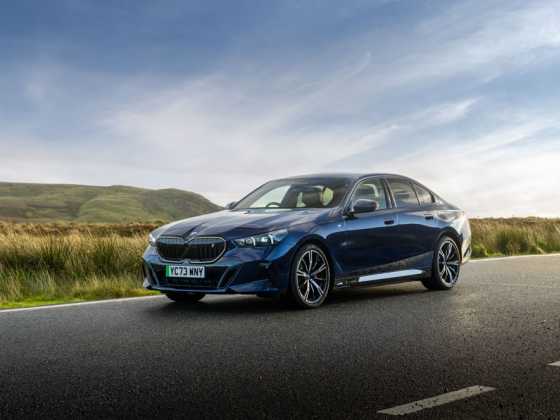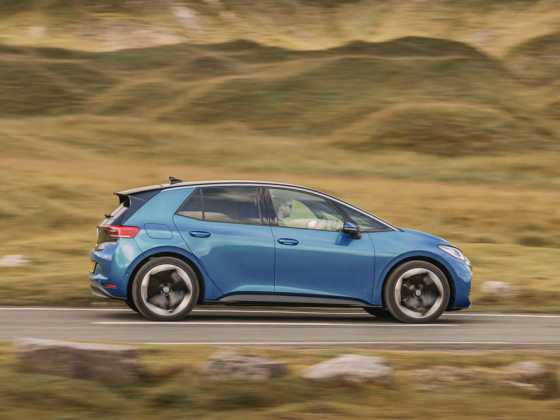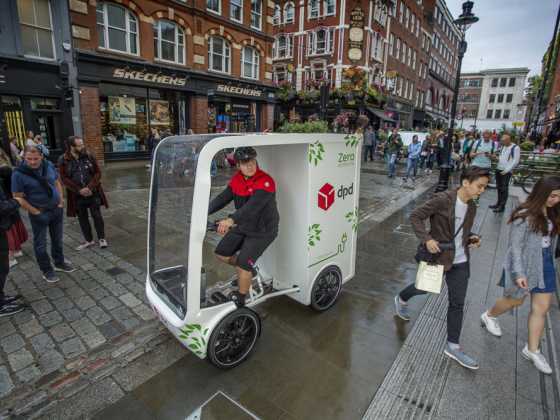Getting the best out of your electric vehicle

Fleet manager Kevin Booker, who has four Guinness World Records for electric vehicle driving, shares useful tips for getting the most range out of an electric vehicle, as well as keeping running costs down.
Record-high energy prices have made electric vehicle efficiency as much of a talking point as traditional concerns about range. There are lots of factors that affect the range you’ll get out of a full charge, but few have as big an effect as the person behind the wheel.
I have been a fan of electric vehicles for a long time, having first bought 22kWh Renault Zoe way back in 2015 – on many occasions I’d achieve over 130 miles to a single charge - and becoming an all-electric household in the last four years with a fleet consisting of an Ioniq 5 and Kona Electric. This EV knowledge has also crossed into my day job as IT and Fleet Manager for a National Park, by a programme that has involved the switch to full electric pool car fleet.
In almost a decade of driving electric vehicles, I’ve come to enjoy the challenge of pushing the boundaries of efficiency and how far you can go between charges, often managing to significantly beat the manufactures official range figures.
I have taken part in three of the GreenFleet EV Rallies including EVROS, John o’ Groats to Lands End, and the Capital City Challenge.
I also have four Guinness World Records for driving EVs between John o’ Groats to Lands End; shortest charging time, one charge stop, and longest distance to a single charge on an electric van.
However, there are some simple tips that any driver can use to keep their EV running costs down.
Think about where you charge
Plugging in at home is always going to be the cheapest way to get a full charge. Home energy VAT rates are five per cent rather than 20 per cent for public chargepoints, and there are several off-peak tariffs from suppliers like Octopus and Ovo with prices from 7.5-9.5 pence per kWh. This means that for a typical EV such as the Hyundai Kona, a full charge can cost as little as £4.80 to allow 300 miles of travel.
If you do have to rapid charge on the move, this can be significantly more expensive, but if planning routes using tools such as Zap Map, you can find the cheapest places to plug in. Although a lot of chargers accept contactless payments, an Octopus Electroverse card will give you discounts on some of the networks.
Fleet managers may like to consider a Paua card, which gives you the convenience of a fuel card but covers a large amount of the charging providers.
Be strategic with your heaters
Particularly useful during spells of colder weather, learn how to use your vehicles heating system. I often find I get in someone’s EV and find the temperature set to max; you wouldn’t do this at home so set your car to a comfortable setting and leave it there - something like 19-20 degrees will be fine and will save a lot of energy and increase range.
Lots of EVs also have a preconditioning function, meaning you can use mains electricity to heat up the car before you leave saving you even more precious miles. Also, if your EV is fitted with heated seats and steering wheel, use those instead as it is much more efficient to heat the person directly than the air in the car first.
Read the road
Think back to when you were learning to drive and your driving instructor told you to look ahead and adjust accordingly. This is no different when driving an electric car. However, over time, people tend to switch off when driving, which results in late braking, heavy acceleration and erratic driving when faced with an obstacle which uses for energy and causes more wear to tyres.
Reading the road, anticipating traffic light changes, gaps at roundabouts and change in directions will make your driving experience smoother and drastically improve the efficiency of your electric car or van. Over time, adjusting your driving style will allow you to gain plenty of additional miles to ensure you reach your destination.
Select the right tyres
With any vehicle, tyres are what connect you to the road. When searching for a new set of tyres, one may consider a premium-rated tyre for increased safety or more fuel efficiency – this is this is a rating from A to G. This is still the case with EVs. In fact, tyre choice is even more important as this will have a direct impact on your battery range.
Therefore, when shopping for tyres, I would recommend selecting an A-rated tyre for rolling resistance. Over time, the right tyres will result in reduced charging frequency and provide you with additional battery range for your peace of mind.
Take advantage of regenerative braking
This is a key difference when switching to EVs. As you lift your foot off the accelerator the car begins to decelerate at a much quicker rate. The energy that is usually wasted is replenished back into the battery during deceleration and turns it into electrical power. Therefore, by adjusting your driving style to lift off the pedal earlier before junctions, the regenerative braking will do most of the work for you.
Mastering regenerative braking allows you to reduce the excessive use of your brake pedal and increase battery range. In the long run, utilising this technique will increase the life of your brake pads, reducing one of the very few maintenance costs of running electric vehicles.
Check your tyre pressures
Selecting the correct tyre is just the first step to maximising your electric vehicle range. Without the correct tyre pressure, the tyres will be less stiff resulting in a higher rolling resistance and decreased range performance.
Therefore, if you have chosen an A-rated tyre for rolling resistance, you will not be maximising the efficiency potential. Research indicates that a slight reduction in PSI can significantly impact the battery range of electric vehicles.
I strongly recommend checking your tyre pressures at least once a month and before and after long-distance journeys.
Be gentle
New electric cars offer instant power, enabling quick manoeuvring at junctions and during overtakes.
However, it’s important to remember: just because you can doesn’t mean you should, as rapid acceleration negatively affects your overall electric range.
To ensure a smoother and more efficient journey, it is advisable to train yourself to gently press the accelerator, gradually increasing momentum to reach your desired speed. This driving approach will help to increase you driving range by a significant margin.
Don’t carry excess weight
Whether you’re a delivery driver with fixed stops or planning a family holiday or road trip, factoring in added vehicle weight is crucial. Often overlooked are how additional loads can impact the battery range along the journey.
Therefore, it’s advisable to travel with minimal weight, avoiding unnecessary cargo whenever possible. While certain loads may be unavoidable, consider the effect on the vehicle’s range and adjust accordingly.
These measures will ultimately help you operate your electric vehicle more efficiently and save time and money charging – as well as on other wear-and-tear items – in the long run.






